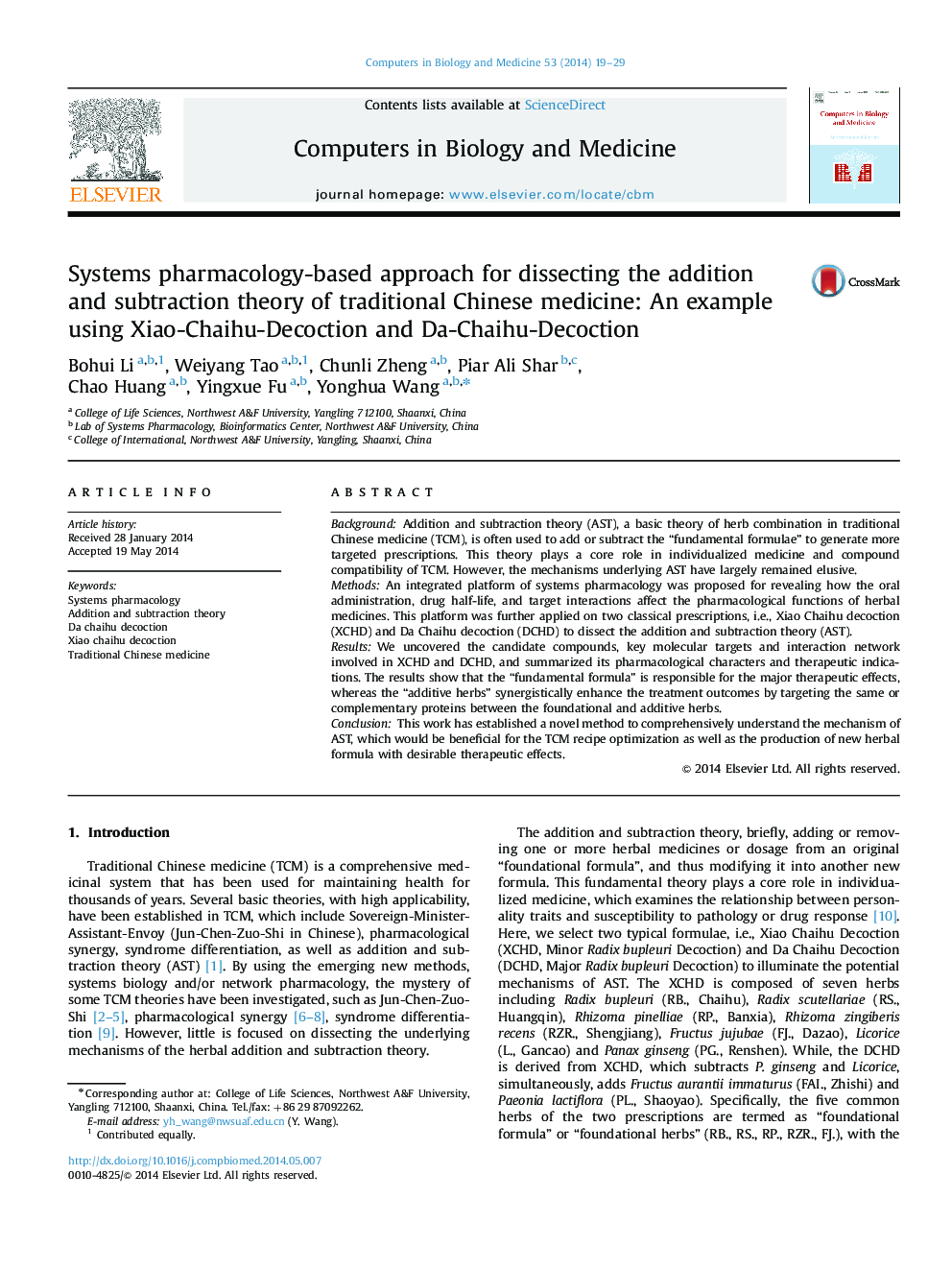| Article ID | Journal | Published Year | Pages | File Type |
|---|---|---|---|---|
| 505371 | Computers in Biology and Medicine | 2014 | 11 Pages |
•Candidate compounds, targets and interaction network involved in XCHD and DCHD.•“Fundamental formula” is mainly responsible for basic therapeutic effects.•“Additive herbs” exhibit reinforced function to the foundational formula.
BackgroundAddition and subtraction theory (AST), a basic theory of herb combination in traditional Chinese medicine (TCM), is often used to add or subtract the “fundamental formulae” to generate more targeted prescriptions. This theory plays a core role in individualized medicine and compound compatibility of TCM. However, the mechanisms underlying AST have largely remained elusive.MethodsAn integrated platform of systems pharmacology was proposed for revealing how the oral administration, drug half-life, and target interactions affect the pharmacological functions of herbal medicines. This platform was further applied on two classical prescriptions, i.e., Xiao Chaihu decoction (XCHD) and Da Chaihu decoction (DCHD) to dissect the addition and subtraction theory (AST).ResultsWe uncovered the candidate compounds, key molecular targets and interaction network involved in XCHD and DCHD, and summarized its pharmacological characters and therapeutic indications. The results show that the “fundamental formula” is responsible for the major therapeutic effects, whereas the “additive herbs” synergistically enhance the treatment outcomes by targeting the same or complementary proteins between the foundational and additive herbs.ConclusionThis work has established a novel method to comprehensively understand the mechanism of AST, which would be beneficial for the TCM recipe optimization as well as the production of new herbal formula with desirable therapeutic effects.
